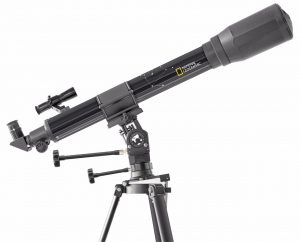Odds are, if you’re looking to get into astronomy or looking to upgrade your telescope, you’ve already realized it’s not as easy as it looks. When talking about telescopes it’s so easy to get caught up in all the technical terms, mechanics and features which often leaves people frustrated before it’s all said and done. Whether its frustration or wrong information, beginners and other aspiring astronomers often purchase the wrong scope which leads to a less than memorable star gazing experience.
This is where we come in as the following guide on 5 Tips to Help You Chose a Telescope for Astronomy is more than you need to make your purchase much easier.
1. Have a Good Idea of What You’ll Be Using It For
Most would say this is a foregone conclusion, but let me be the first one to tell you it’s not. Telescopes can either be used for Terrestrial or Astronomical viewing with each having distinct differences. Telescopes used for terrestrial (land) are much different than recommended scopes for astronomy which is one of the biggest misconceptions. Rarely, you will find a scope that performs the same with land and sky viewing with different magnifications, aperture, and other recommended features.
2. Understand What Aperture is and Why It’s the Most Important  Feature
Feature
The importance of aperture with telescopes cannot be understated; in fact, it’s the most important feature to look for. The size of the aperture controls how much light the scope can capture, and since most astronomical viewing takes place in poor lighting conditions most would assume the larger the aperture the better.
In most cases this is right, but not for everyone. Telescopes with larger apertures are just that, larger. The aperture is the diameter of the main optical component of the scope and is made of either mirror or lens. The more light you have within the optical component means a clearer, brighter image.
Just remember, the larger the scope the less portability you will have which is always something worth considering.
3. Know the Different Types of Telescopes
There are three main types of telescopes including a reflector, refractor, and catadioptric with each having distinct advantages and disadvantages. Refracting telescopes are the most common and are best suited for beginners while catadioptric are often more expensive, and are best suited for experienced astronomers.
- Reflector – larger apertures, simple to use, delivers bright images, mirror image, cheaper in price
- Refractor – Smaller apertures, simple to use, more compact, lens, very durable, and minimal maintenance
- Catadioptric (Cassegrain) – Improved versatility, better near focus, superior deep space focus, hybrid of mirrors and lenses, durable, and typically more expensive
4. Choose a Mount that’s Stable
Aside from the scope itself, the mount is the second most important purchase when looking to get the most from astronomy. This is something that is easily over-looked, but something that makes all the difference when following stars while providing a stable platform.
There are two different types of telescope mounts including an equatorial mount and AltAzimouth mount. The equatorial mount is the most complex and typically costs more, but makes it possible to follow the earth’s natural rotation. An AltAzimouth mount is less complex and swings in all directions including left to right, and up and down.
5. Stick to Your Budget
Telescopes come in a wide array of sizes and of course, price. When starting out, be sure to come up with a budget and be sure to allocate some of this to the mount, case, and any other hardware you may want. You can expect to spend anywhere from $300 – $700 for a high quality scope, but you can find cheaper alternatives for under $100 if you’re just starting out.


 Feature
Feature